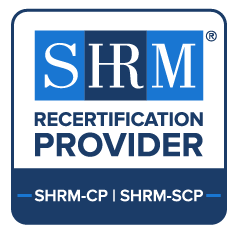ADA Training
We provide training on all ADA topics, and on all levels from basic to advanced. Trainings are available in-person, webcast, and online.
We offer custom training programs that are custom-tailored to your specific organization, situation, and level of need. Contact us to inquire about custom training programs.
Online Training Login Training Request Form
Free Online Training
Our online classes are now available to the public at no cost. New classes are added regularly.
If you need training that is not covered in our catalog of free courses, or if you need training catered to your organization, please fill out our training request form so we can help create a training program for you.
Instructional Materials
The Rocky Mountain ADA Center produces instructional guides and how-tos for increasing accessibility.
Enhance Your ADA Training Efforts with Our Ready-to-Implement Courses
Take your organization's ADA education to the next level with our professionally developed training courses. We offer over 30 different courses with topics ranging from ADA History and Overview to Disability Etiquette Training. If you are looking to integrate these courses into your own Learning Management System (LMS), we offer them as convenient off-the-shelf solutions—ready for deployment.
- Each course includes interactive knowledge checks to reinforce learning.
- We can provide a set of final exam questions and answers to support your assessment needs.
- No need to build from scratch—save time and resources.
Please note: These courses are delivered “as-is” and are not customized or updated over time.
Ready to get started? Submit your request through our Training Request Form today!
How does the Rocky Mountain ADA Center’s free online courses count toward the ACTCP?
All our online courses count as 2-credit electives. The only exception is our ADA History and Overview Course, which counts as the 1-credit "ADA Basics" pre-requisite course. None of our online courses count for foundational-level ACTCP credits, but they're a great option for knocking out electives (the ACTCP requires 22 elective credits).
We recommend you check out the ADA Coordinator Certification Program’s website: ADA Coordinator Training Certification Program (ACTCP) - Great Plains ADA Center to learn more about the program’s specific requirements.
For the courses listed below under required training, you can add them from our Course Catalog: Rocky Mountain ADA Training | Course catalog (talentlms.com)
- 2010 ADA Standards: Rocky Mountain ADA Training | Course catalog | 2010 ADA Standards (talentlms.com)
- Role of the ADA Coordinator: Rocky Mountain ADA Training | Course catalog | The Role of an ADA Coordinator (talentlms.com)
- Self-Evaluation and Transition Plans: Rocky Mountain ADA Training | Course catalog | Self-Evaluation and Transition Plans (talentlms.com)
- Title I Overview: Rocky Mountain ADA Training | Course catalog | Title I Overview (talentlms.com)
From the topic training, we do have some of these courses available:
- Effective Communication: Rocky Mountain ADA Training | Course catalog | Effective Communication and the ADA (talentlms.com)
- Emergency Preparedness: Rocky Mountain ADA Training | Course catalog | Emergency Preparedness and the ADA (talentlms.com)
How should trainees go about submitting their RMADAC training certificates for ACTCP credits?
Instructions for uploading training certificates for ACTCP credits can be found on the ADA Coordinator Training Certification Program (ACTCP) - Great Plains ADA Center website. If you attend trainings facilitated by the Great Plains ADA Center, you may not need to upload those certificates for ACTCP credit; they will be automatically entered in your portal.
Additionally, you can find some material within two of our courses on the topics of right of way and reasonable accommodation: our Accessible Transportation (Rocky Mountain ADA Training | Course catalog | Accessible Transportation (talentlms.com)) and Title I Overview course. However, we recommend you also look into the U.S. Access Board’s website for PROWAG (Public Right of Way Accessibility Guidelines) webinars: U.S. Access Board - Home (access-board.gov).
If you have any other specific questions regarding the certification program, please contact Mike Edwards, program director for the ACTCP at edwardsmic@missouri.edu.
We're a SHRM Recertification Provider
 The Society of Human Resource Management (SHRM) credential proves your competence in the field and your dedication to the profession; maintaining it shows you are commited to self-improvement and HR excellence. We are certified SHRM recertification providers, allowing you to keep your valuable certification standing.
The Society of Human Resource Management (SHRM) credential proves your competence in the field and your dedication to the profession; maintaining it shows you are commited to self-improvement and HR excellence. We are certified SHRM recertification providers, allowing you to keep your valuable certification standing.
Contact us to inquire about SHRM recertification.